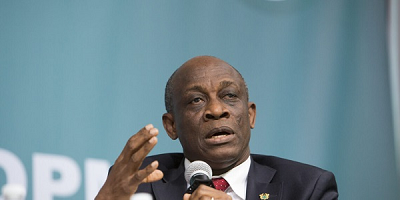It is intriguing to follow the debate over the Ministry of Finance’s letter remind a professional institution like the Ghana Revenue Authority (GRA) of its obligations regarding an apparently non-controversial matter the VAT laws have been clear about.
It is not accurate for government to cite only Act 870 of 2013 – and therefore for some officials to blame the tax on the law enacted by the NDC. This is because the comprehensive review of Schedule 1 [Exemptions: Sections 35 and 37] under VAT [Amendment] Act, 2019 [Act 1005] was enacted by the current NPP government.
Historical overview of VAT laws
The amendment is important because it did not change the rendition under the same Item 9 (i.e., Domestic Use of Electricity) of Schedule 1 under Act 870 – both of which read “A supply to a dwelling of electricity up to a maximum consumption level specified for block charges for LIFELINE units” [emphasis].
Hence, if the law did not change, then the question arising is which authority or agency has taken liberties with Ghanaians (a) by giving express powers to GRA and/or Electricity Company of Ghana (ECG) to stop collecting the tax on the blind side of Parliament; or (b) failed to discharge its collection duties effectively under Act 870 and VAT [Amendment 1005].
Further, we engage readers to take them further down memory lane on the matter. The repealed VAT Act, 1994 [Act 486] was the only law that exempted ALL domestic consumption of electricity. It notes under “Item 9 of Schedule 1 [Exempt Supplies, s5(1)]—Electricity: domestic use of electricity”, which does not specify a limit of consumption. Then came Kumepreko and progress toward the introduction of VAT was cancelled!!
Hence, it was the new VAT Act, 1998 [Act 546] that re-introduced the VAT, which also adopted the concept of a “lifeline” – but not explicitly in the Act. It notes under Item 9 of Schedule 1 [Exempt Supplies s14 & 16] – “Electricity: domestic use of electricity up to a minimum [sic] consumption level prescribed in Regulations by the Minister”.
Rationale for taxation and exemption
The rationale for the ‘lifeline’ concept or limitation is the fairness or equity principle, which makes it unfair to exempt all electricity use by consumers. For example, some high-income users may have 3 or even more air-conditioners and other high-end electrical gadgets while low-income counterparts that need the relief may be using only 1 each of a ceiling/standing fan, table-top fridge and small television!!
Indeed, this is the principle underlying other VAT exemptions such as prescribed textbooks, supply of water excluding bottled water (pre-pollution), basic medical supplies and raw food produced in Ghana.
Subsequently, none of about 15 amendments since 1998 mentioned the position of the original and amendment VAT laws until the rewrite of the law under VAT Act 2013 [Act 870] formally used the term “lifeline”.
The rendition under VAT Act 2013 [Act 870] and its 2019 Amendment Act do not change this position, since Item 9 of Schedule 1 (Exempt Supplies) continues to read: “Electricity: a supply to a dwelling of electricity up to a maximum consumption level specified for block charges for LIFELINE units” [emphasis].
VAT paid on electricity by businesses
For a wholesome view, the article ends with the impact of VAT charged and paid on electricity by businesses. All entities pay VAT for electricity use, but those registered can claim Input Tax Credit (ITC) and refund – where the VAT charged on Output/Sales is lower than the VAT paid on Inputs/Purchases.
The net amount between Input VAT and Output VAT increases or reduces production costs and consumer prices.
Since non-registered entities cannot charge VAT and offset the Input VAT paid, they add the full Input VAT to costs and prices. This is precisely why the denial of VAT ITC or refund distorts the VAT regime by increasing prices after the conversion of GETFund and NHIL to Straight Levies. Since their removal from the VAT base, businesses continue to add the amount denied to their costs – which then increases prices and causes inflation.
Conclusion
The VAT problem facing the country lies in distortion of the VAT regime as well as imposition of several levies, including the Straight Levies, that deny the characteristic ITC and refunds to registered businesses. Hence, even registered businesses increase costs and prices at multiple stages of the production distribution chain – a phenomenon called cascading VAT. This misguided tactical exclusion from the VAT base and VAT rate increases/worsens the escalation in prices and leads to evading and avoiding the VAT.










